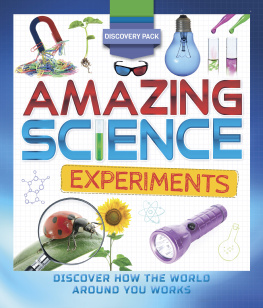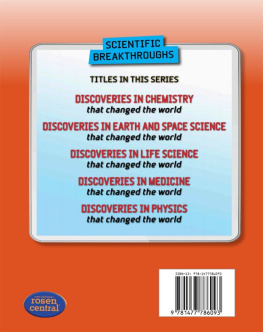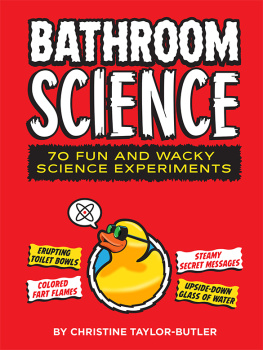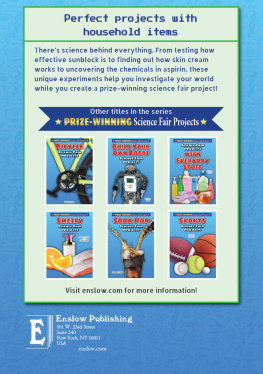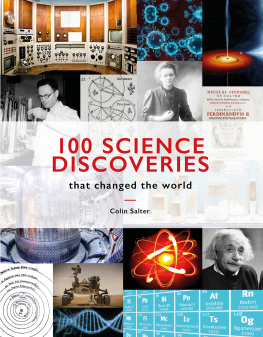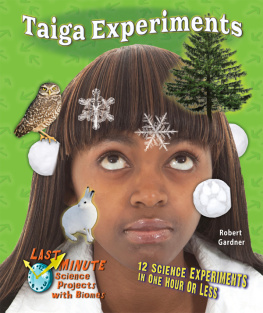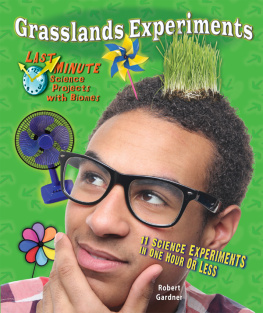Introduction
In a 2009 study published by Current Biology, a team of scientists asserted that laughter is not a unique human trait. How did these scientists (whose parents probably worked two jobs each to pay for their educations) figure out that other animals laugh? They tickled baby apes.
The scientists concluded that orangutans, gorillas, chimpanzees, and bonobos are, indeed, ticklish. Now, this study has serious implications, and several scientists praised the findings. But thats not what this book is about. Science Stuff will not bore you with such things as important findings. No, this book celebrates the offbeat moments, the ridiculous findings, the screw-ups, the goofballs, and the often-clueless humans who practice and experience all the fields of science. Because really, whats more interesting, the fact that scientists are closer to understanding our links with our ancestral cousins, or that a highly respected team of scientists (it took more than one!) tickled apes in the name of science? If you answered the latter, this book is for you.
Sure, science is serious business. The word itself reeks of chemicals, musty textbooks, lectures that threaten to dislocate your jaw from serial yawning, and nerds. But behind the lab coats and Coke-bottle glasses lies a very important fact. If you can wade through all those pesky theories, hypotheses, and world-altering discoveries, youll find that the field of science reads more like a series of punch lines than a research paper riddled with footnotes and references. Thats because no matter how objective science strives to be, scientists are humanthe least objective life forms in the universe (to our knowledge). And theres the rub. We may not be the only species that can laugh, but as far as we know, were the primary source of all the humor on this planet. So, without taking anything away from all that science and its practitioners do for the advancement of society, we present our own humble findings. We spent hours researching, studying, culling, and goofing off, and the results are this subjective, stilted view of the majestic endeavor of science as practiced and experienced by our all too fallible race.
You can read Science Stuff straight through, read it from back to front, or keep it in the bathroom for multi-tasking purposes. Whatever you do, read it to your chimp. He can probably use a good laugh.
The Scientific Method in Action
I MAGINE youre sitting under an apple tree when suddenly an apple falls on your head. If youre a normal person, you may rub your head and say Ouch, throw the apple in anger, or even eat it. If, however, youre a more curious creature, you may do all those things and then start wondering why the apple fell from the tree in the first place or why apples and rocks and falling pianos dont stay in the air. If youre a scientist, you stop what youre doing and devote the rest of your life (often ignoring loved ones and your own personal hygiene) testing why that apple fell from the tree. The scientist doesnt just make assumptions about the apple. She or he follows a method of discovering knowledge that includes making predictions, testing these predictions empirically, and then developing theories that best explain the results. This is known as the scientific method, and scientists have been using it for a thousand years to ascertain why it is men always leave the toilet seat up or whether fish get drunk when exposed to alcohol. The scientific method has several guidelines, none of which state that just because you can, doesnt mean you should.
BLUNDEROLOGY
Perhaps Einstein said it best: Two things are infinite: the universe and human stupidity, and Im not sure about the universe. As weve already proven, scientists are human. Hence, scientists are sometimes stupid.
The Tooth Scary
Aristotle, the ancient Greek philosopher and scientist, is considered one of the founding figures of Western philosophy whose work in the fields of science continues to influence scientists more than 1,500 years after his death. As fond of empirical study as he was, this didnt stop Aristotle from stating that women had fewer teeth than men without bothering to check.
Sheep for Brains
Imagine UK government officials consternation at having to inform the public that bovine spongiform encephalopathy (mad cow disease) had jumped the species barrier and infected sheep. The Institute for Animal Health in Edinburgh spent more than five years and nearly $400,000 of taxpayers money studying sheep brains and was certain of its dire findingsmeaning certain death for thousands of sheep. Unfortunately for the scientists (and fortunately for the sheep), because of a labeling problem and some other unexplained mix-ups, the scientists in charge of the study had been studying the wrong brains the whole time. Instead of sheep brains, they had been working with infected cow brains.
Shake, Rattle, and Die
Dr. Vladimir Gavreau was a French robotics researcher who developed remote-controlled devices for factories and the military at the height of the Cold War. His team worked in a large concrete building, and periodically they would all experience a disconcerting nausea. The source of the sickness was found to be an improperly installed motor-driven ventilator, which was creating an infrasonic resonance (low-frequency sound no one could hear). Being in the weapons business, Gavreau believed he had found a new way to beat the bad guys. His team went about creating a sonic weapon, a giant infrasound organ with pipes six feet in diameter and up to seventy-five feet long. The first time Gavreau turned on the device, the building they were outside of was nearly destroyed and the researchers were gripped in what they later called an envelope of death. Though the organ was only on for a few seconds (one of the researchers managed to turn it off), the scientists were extremely sick for the next twenty-four hours, and their eyesight was affected for days afterward. According to one report, their body cavities absorbed the acoustic energy and would have been torn to pieces had the power not been turned off quickly.






